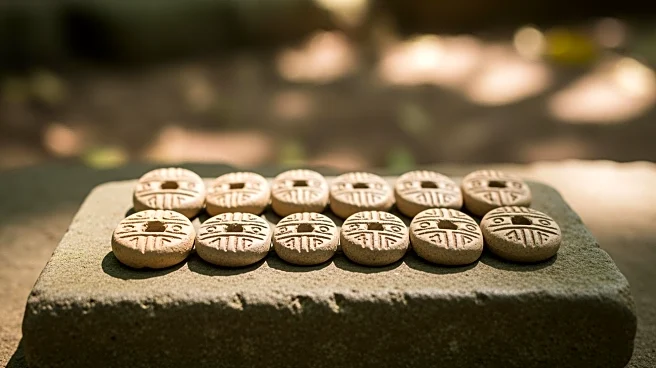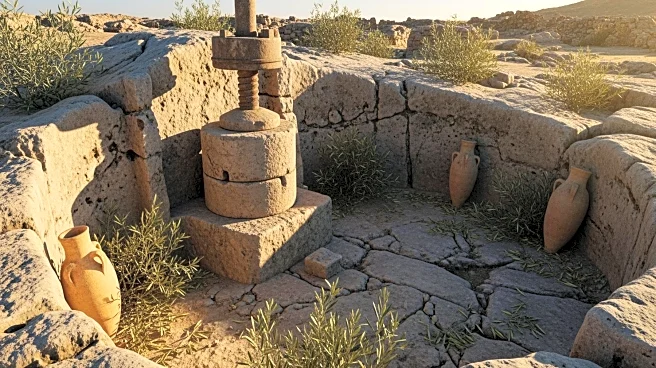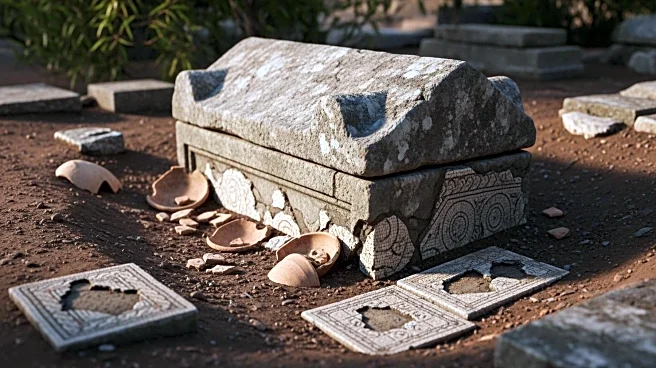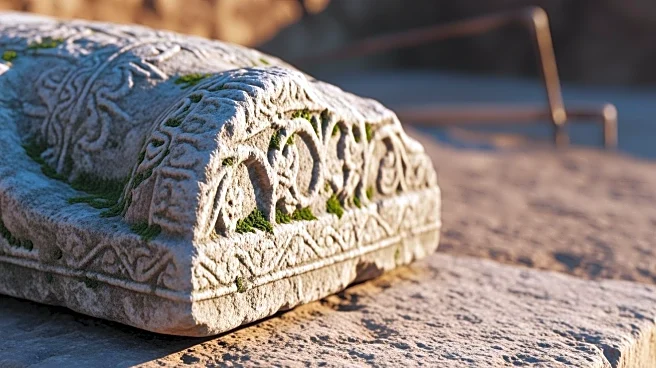What's Happening?
A series of approximately 5,200 holes stretching across the Pisco Valley in the southern Peruvian Andes has puzzled researchers for nearly a century. Recent studies suggest these holes, known as Monte
Sierpe, may have served as a marketplace for a pre-Inca civilization and later as an accounting method for the Incas. Drone footage and microbotanical analysis of pollen grains found within the holes indicate the site was used for bartering goods such as maize, cotton, and coca. The holes are organized into distinct sections, suggesting a non-random arrangement. The site was likely used between AD 1000 and 1400, aligning with the pre-Inca civilization's use. The Incas may have expanded the site for large-scale accounting, similar to their khipu system of knotted strings.
Why It's Important?
The discovery of Monte Sierpe's purpose provides insight into the economic practices of ancient Andean civilizations. Understanding these practices helps archaeologists piece together the social and economic structures of pre-Hispanic societies. The site’s use as a marketplace and accounting device highlights the complexity of trade and resource management in the Andes. This research contributes to the broader understanding of Indigenous economic mechanisms and challenges the notion that pre-Hispanic societies lacked sophisticated economic systems. The findings also emphasize the importance of preserving archaeological sites to maintain cultural heritage and provide accurate historical narratives.
What's Next?
Researchers continue to study the site to confirm its connection to the Inca khipu system and further understand its role in ancient Andean economies. Additional radiocarbon dating is underway to refine the timeline of the site's use. Preservation efforts are crucial to protect the site from potential damage and ensure ongoing research can continue. The study of Monte Sierpe may lead to new discoveries about the economic and social practices of ancient civilizations in the Andes.
Beyond the Headlines
The research underscores the importance of incorporating Indigenous perspectives in archaeological studies to accurately represent local heritage. The narratives built around sites like Monte Sierpe have real impacts on cultural identity and historical understanding. As researchers unlock the secrets of Monte Sierpe, they contribute to a more comprehensive view of ancient Andean societies and their contributions to global history.












